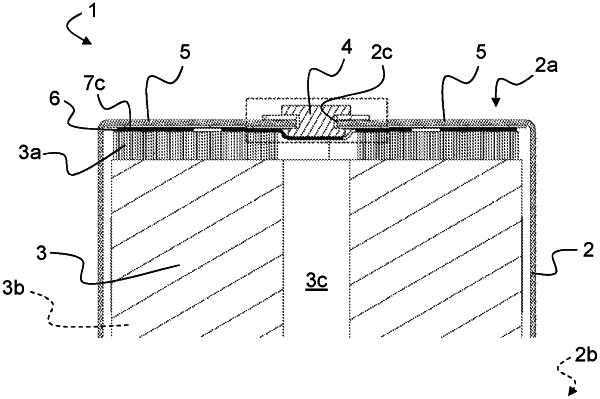| CPC H01M 50/559 (2021.01) [H01M 10/0422 (2013.01); H01M 10/0587 (2013.01); H01M 50/107 (2021.01); H01M 50/533 (2021.01); H01M 50/54 (2021.01); H01M 50/583 (2021.01)] | 13 Claims |

|
1. A cylindrical secondary cell (1) comprising:
a terminal part (4);
an electrode roll (3) comprising a conductive sheet (3a) having a centrally positioned channel (3c) formed therein; and
an electrode lead plate (6) that comprises:
a circular inner contact region (6c) arranged in direct electrical contact with the terminal part (4),
an annular outer contact region (6e) arranged in direct electrical contact with the conductive sheet (3a), wherein the annular outer contact region (6e) radially surrounds the circular inner contact region (6c), and
an annular fuse region (6d) concentrically arranged between the circular inner contact region (6c) and the annular outer contact region (6e), the annular fuse region (6d) and the circular inner contact region (6c) being positioned within a periphery of the centrally positioned channel (3c), and the annular fuse region (6d) being adapted to break when a predetermined current passes through the annular fuse region (6d) so as to break the direct electrical contact between the terminal part (4) and the conductive sheet (3a).
|